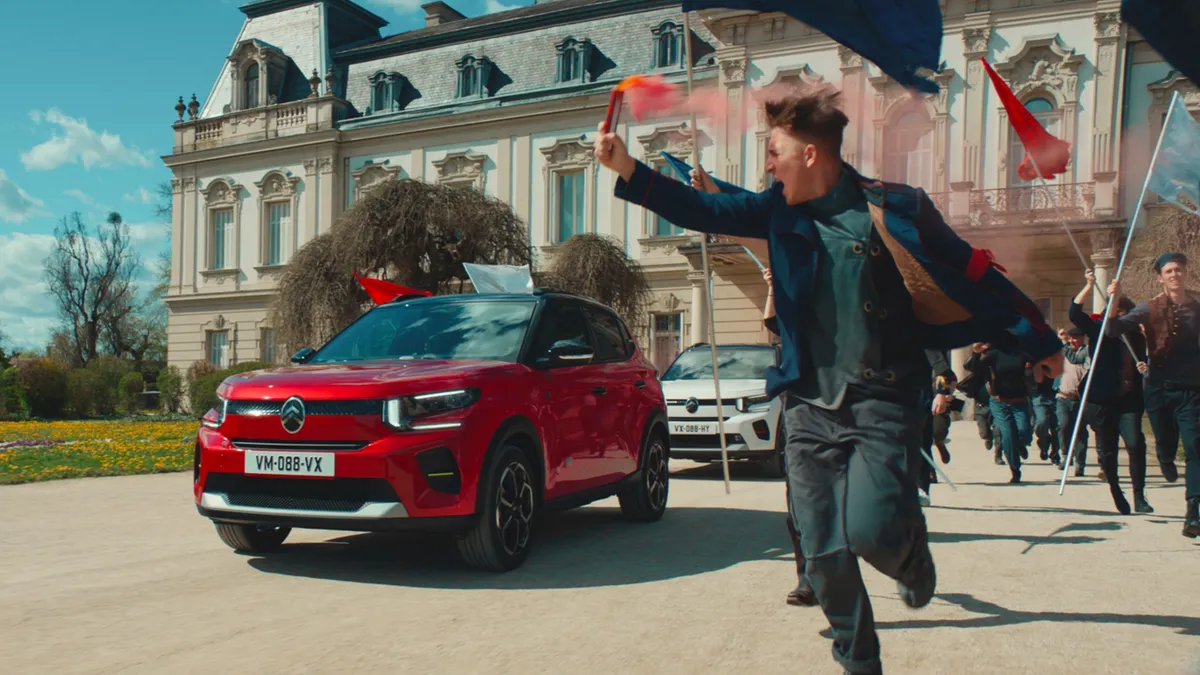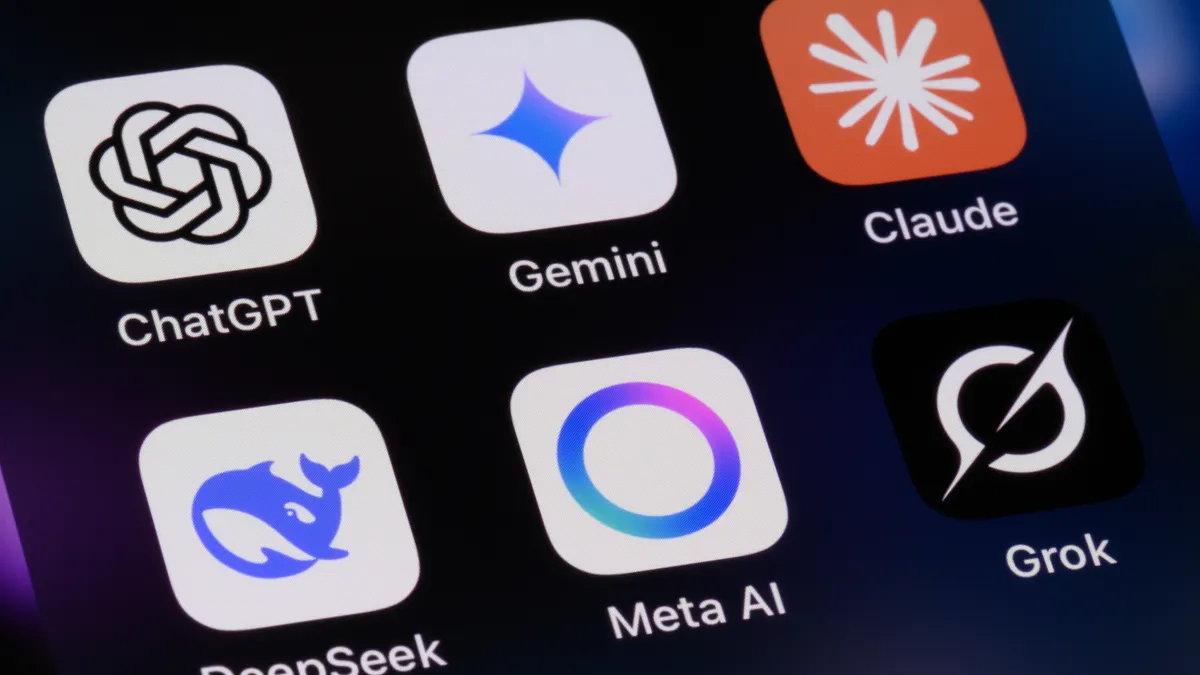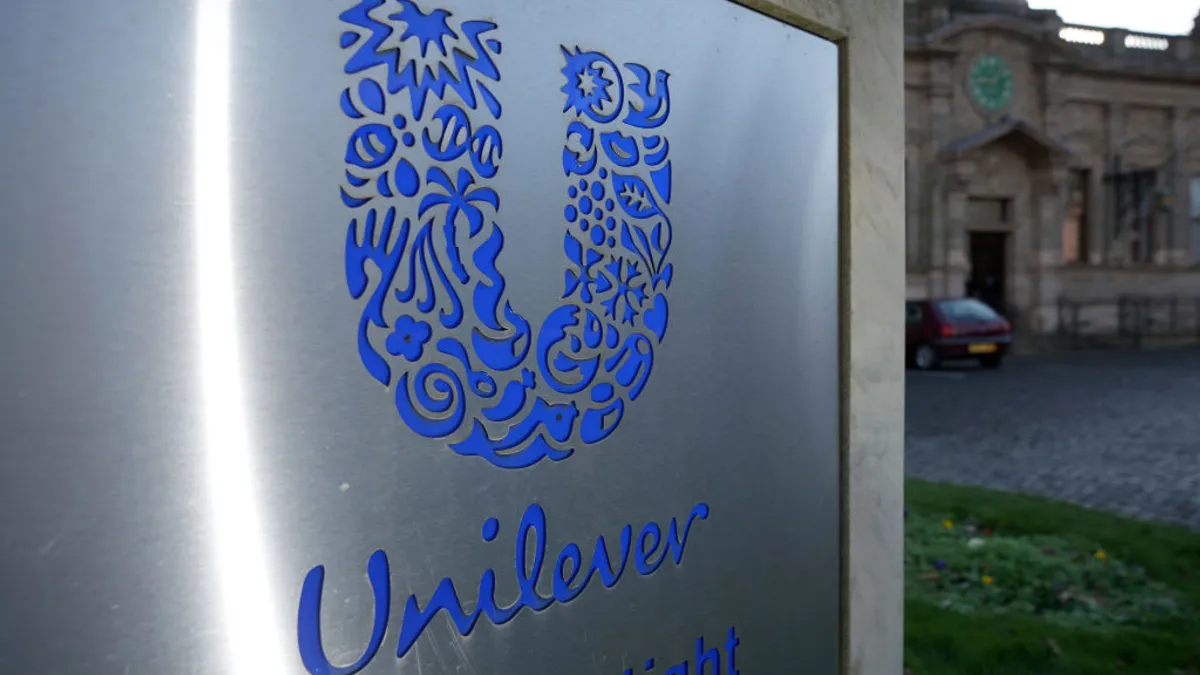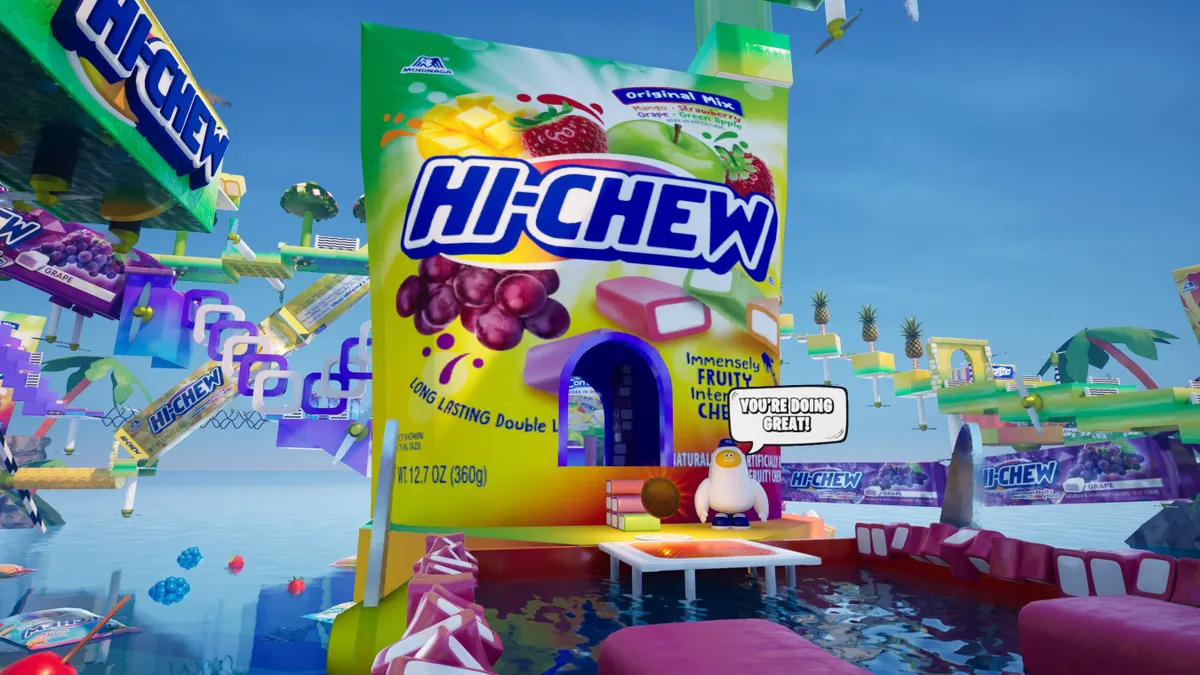Campaign Trail is our analysis of some of the best new creative efforts from the marketing world. View past columns in the archives here.
Around the globe, 2024 is already proving to be a year of political upheaval, a mood captured by the shocking results of this month’s snap election in France. The rejection of the far-right National Rally party has inspired some headline writers to pun on the French Revolution — a theme that remains resonant in France and beyond.
For proof of the historical event’s durability, look no further than Citroën’s campaign for its new, fully-electric ë-C3 that debuted earlier this summer. In a hero spot, a group of aristocrats in 18th century style — think powdered wigs and full make-up — attend a garden party at a chateau, enjoying hunks of cake and games of badminton.
That is until a crew of proletarian thieves descend the chateau’s walls, liberating a fleet of hatchbacks as they are pursued on horseback. Despite the aristocrats’ attempts to stop them using a range of sporting equipment, the gang is able to escape, crashing through cakes and locking the gates behind themselves. “Electric is no longer for the elite,” reads a title card.
Citroën bills the ë-C3 as the first fully-electric, well-equipped, made-in-Europe car, one that costs, at 23,300 euros (about $25,000), about as much as a traditional, internal combustion engine (ICE) car. The Stellantis-owned automaker wanted a campaign with the scale befitting its victory in the “space race” for such an option — not just a product-focused ad.
“We need a story, something cultural, something high impact, something that will stop peoples’ thumbs when they see it on social media. I want to stand out in the in the ad break,” said Federico Goyret, senior vice president of global marketing and communications at Citroën.
Citroën also wanted to be faithful to its tradition of creative excellence, a heritage that began a century ago, when the brand’s name lit up the Eiffel Tower for almost a decade.
“I needed something that completely stood out of the box, and as a client, we were willing to take all the risks that you have to take,” Goyret said.
French style
Paris-based agency BETC saw a campaign around Citroën’s ë-C3 as an opportunity to take a big swing on a product that is challenging the status quo of the industry by providing an affordable option for European car-buyers who are otherwise priced out of the electric car market or forced to rely on ICE cars that could eventually be banned in Europe all together.
“[The campaign] looks at the market from a consumer perspective: Why is this thing that everyone wants me to buy so unaffordable? Well it no longer is,” said Mehdi Benali, managing director at BETC. “This product is doing what it does in the advertising, which is it’s breaking stuff out of the elite’s world and giving it to the masses in a very stylish, elegant, French way.”
The brand and agency have worked to position Citroën as a global brand — not just a French one — but embraced the opportunity to tie the ë-C3 to French history and the revolutionary vision of founder André Citroën, often described as the Henry Ford of Europe. But spoofing the French Revolution needed to be done in a way that fit the brand’s identity.
“You take any event in history and put a Citroën filter on it, everything has this bold, audacious extravagant tone added to it,” Benali said.
Cinematic ambition
The resulting campaign spot feels less “Masterpiece Theater” and more “Marie Antoinette,” especially since some of the wigs and costumes that were used in Sofia Coppola’s film were flown in from Austria for the commercial shoot. The anachronistic quality that comes from mixing 18th century style with 21st century automobiles was part of the “crazy world” imagined by director Frederik Bond. To bring it all together, the ad is soundtracked by a 20th century classic: David Bowie’s “Suffragette City.”
“That was the first [track] that we tried, and then we tried a dozen others and none of them felt anywhere near as good as this one,” Benali said of the song choice. “It has that rock’n’roll, almost punk spirit of: ‘We are here to break things in an industry that hasn’t challenged that status quo for a million years.’”
The nostalgic favorite also allowed Citroën to better connect with its target audience, which has an average age around 45, with about 35% of buyers over 50. All together, the 80-second spot brings cinematic ambition to a category whose ads are often marked by the compact reliability of the small-sized hatchbacks themselves.
“It’s the launch of the ë-C3, but it’s, to a certain extent, the revolution of Citroën,” Benali said. “It deserved that cinematographic feel that goes above and beyond what is typically in advertising.”






















